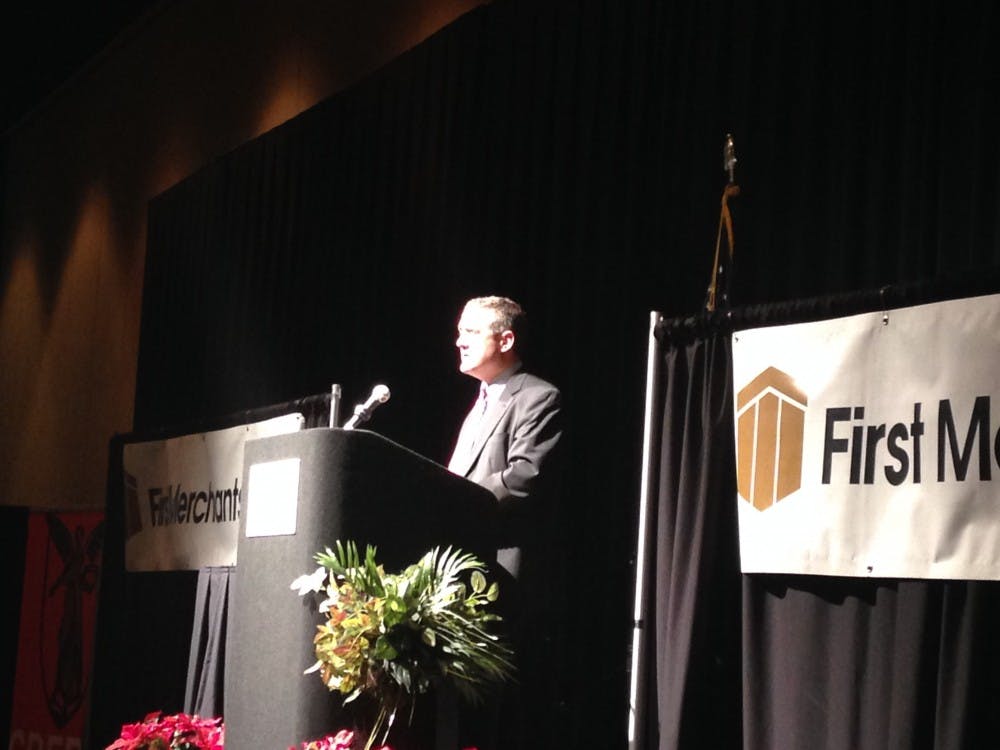Students should be aware of the state of the economy and how it will affect them after graduation, said the director of the Center for Business and Economic Research.
Michael Hicks presented the 20th annual Indiana Economic Outlook on Dec. 7 before a keynote address from James Bullard, president and CEO of the Federal Reserve Bank of St. Louis.
Hicks’ presentation, also compiled in part by research assistant professor Srikant Devaraj, began by looking at the U.S. economy, followed by a look at the Midwest (which included Indiana, Illinois, Kentucky, Michigan, Ohio and Wisconsin) and then a more micro view of Indiana and its regions.
Hicks said information like this can be valuable for students.
“Students probably are focused on their own studies and interests, but the state of the economy will surely influence their job opportunities after graduation,” Hicks said.
Predictions for Indiana included a growth in employment by 32,400 workers, leaving an unemployment rate of 4.1 percent by year’s end.
"While we think GDP growth is slow, we see very few Hoosiers or Americans who wish to work not working," Hicks said. "Here in Indiana, we expect a strong labor market performance, and that's been the bright spot. It's not going to be fast; it'll be slower than the rest of the economy, which makes sense."
Hicks’ predictions also saw urban areas growing at rates near the national level, while rural counties will continue to lose population in large numbers.
The presentation said the recession hit the Midwest harder than other parts of the country, but all states are expected to experience some sort of growth from 2016 to 2030.
“The most optimistic position is that of Indiana, which is forecast to grow at near the national rate at 2.1 percent," the report said. "Growth in Michigan and Illinois is anticipated to remain very low, with growth in the remainder of the region also sluggish.”
Kara Berg contributed to this story.





